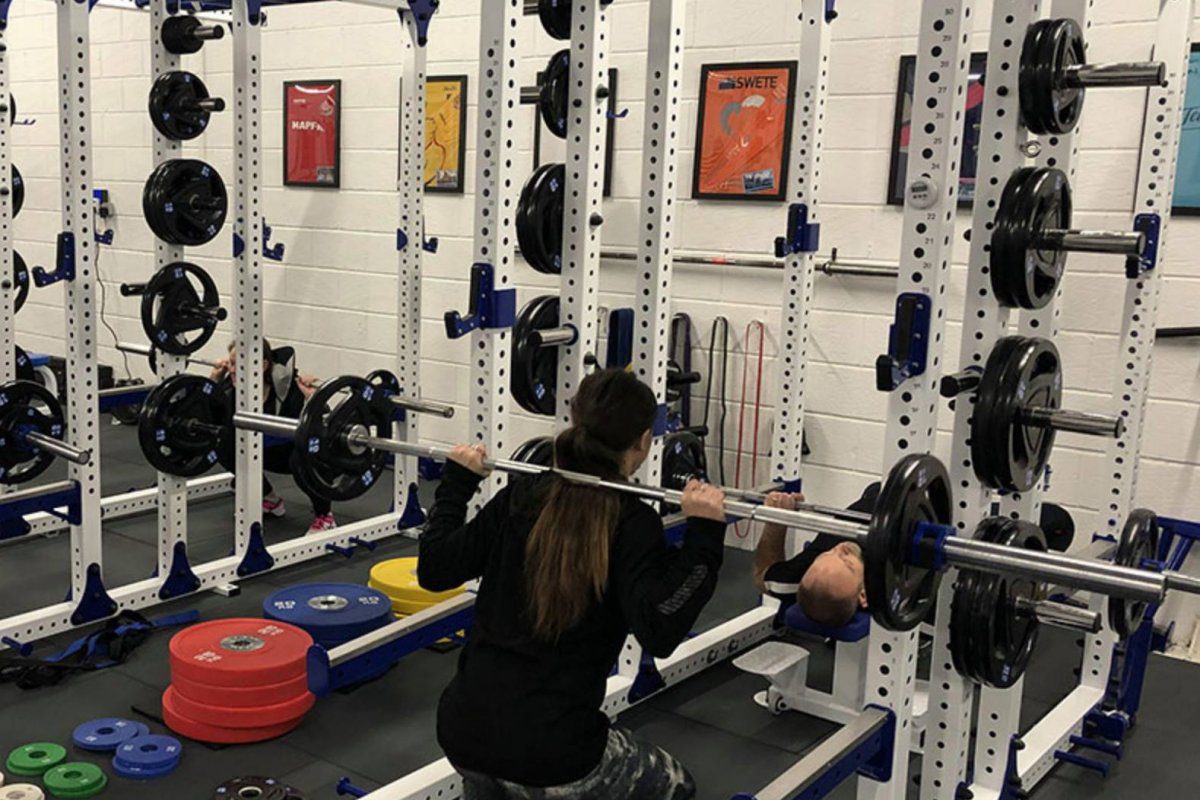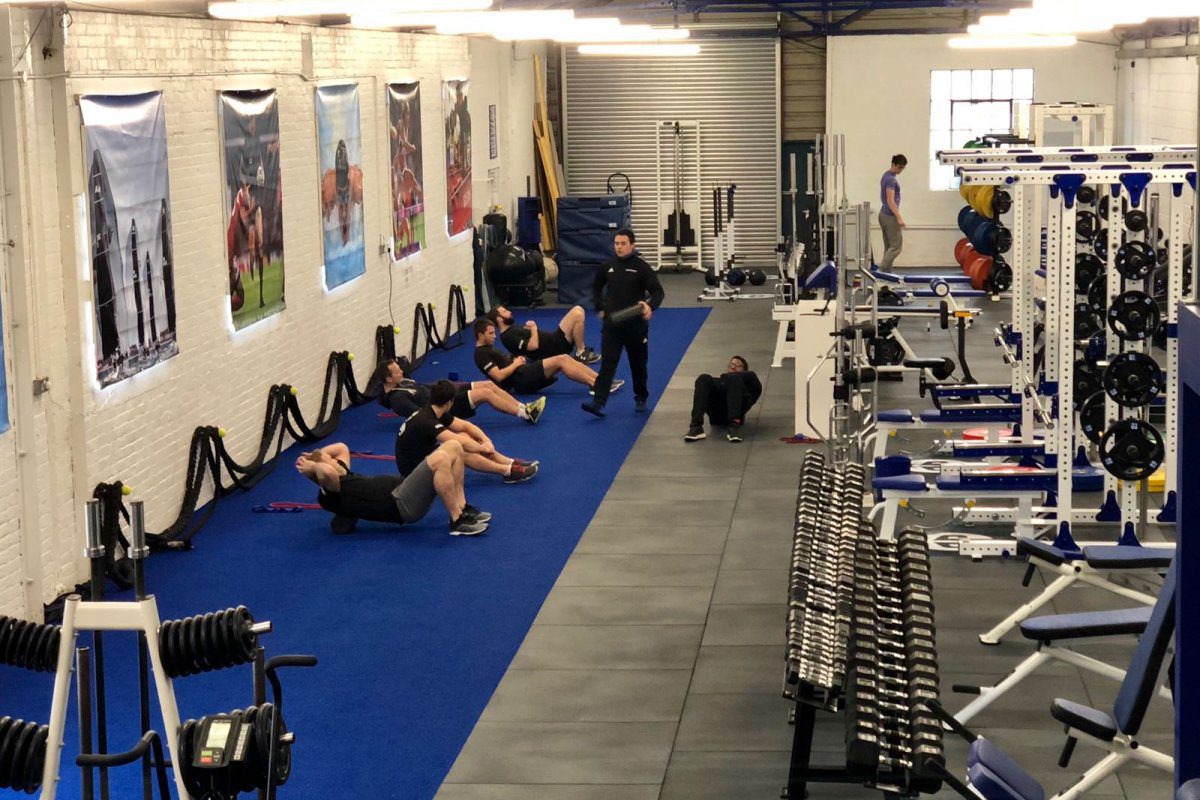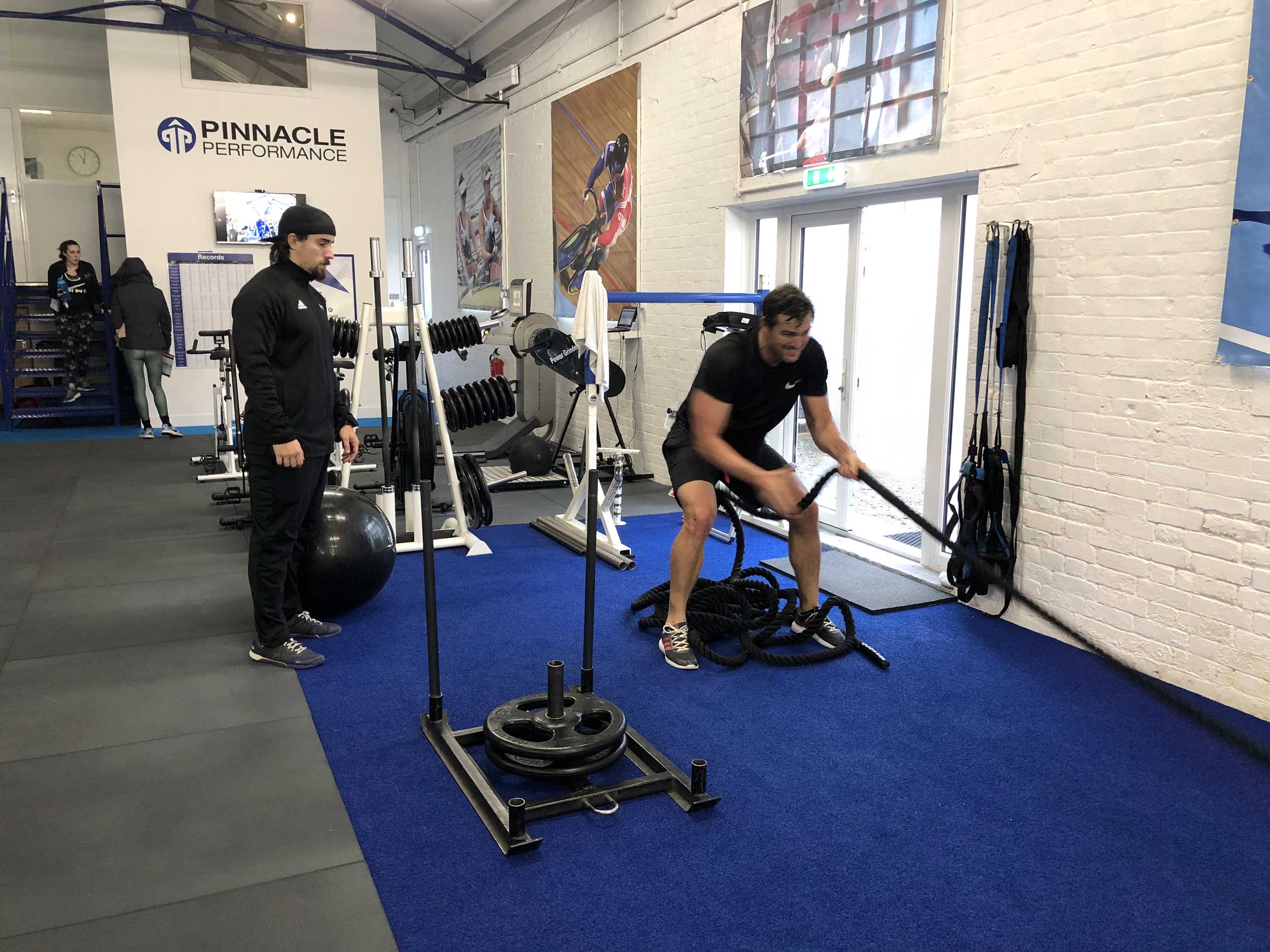Top Tips - Sailing Fitness
Get the most out of your Strength and Conditioning Programme.
By Jamie Gabbidon, Coach at Pinnacle Performance.
As race yachts get faster, more advanced and physically more demanding, it’s becoming even more important to make sure you and your sailing crew are strong, fit and healthy for the racing season. In fact, year-round training will ensure you are fit enough to perform throughout the season and perhaps enjoy your time on the water even more.
The Personal Trainers at Pinnacle Performance are specialists in helping athletes, whatever their health and fitness goal, to get results and progress in their chosen sport. Within sailing specifically, they have trained Volvo Ocean Race crews, Sailing Olympians and National Champions, but they are also passionate about helping amateur sailing crews to make personal gains, whatever level they are competing at. Even if you are not racing very often and just want to be more agile around the boat, a structured training programme can work wonders.
Here, Pinnacle Performance Coach Jamie Gabbidon gives us his top tips on how to make the most of your time in the gym to make sure you perform at your best on the water.

Evaluate Yourself (and be honest)
Whether it be for sailing, another sport or general health and fitness, your training programme needs to have an objective and clear purpose if you want to see a significant improvement. It is important for coaches to know what an athlete needs for their sport, but more importantly, what they need as an individual.
Assessment
Before our clients commence any training programme they will go through a comprehensive assessment covering the following:
- Posture, flexibility and mobility screening
- Strength and endurance testing
- Injury history
- Exercise history
- Nutrition and lifestyle overview
After a complete assessment, you can spend the initial 1-2 months of training building a solid foundation. Known as General Physical Preparation, the objective of this phase is to target muscular imbalances and improve general conditioning through a progressively higher volume of work with a lower intensity of effort. The most common areas that we focus on with our sailors are the shoulders, elbows, lower back and knees.
Prioritise your weaknesses, without disregarding your strengths
Once you have a clearer picture of what is required, your training should focus on the areas that will give you the best return in the long run.
- Strength training over conditioning or vice versa, depending on whether you need to produce more power or maintain your power output for longer on the boat
- Flexibility and mobility to reduce injury risk and move quickly across the deck
- Strengthening your lower body if it is weak in comparison to your upper body – you are only as strong as your weakest link, and your lower body is your foundation
- Developing a specific area of your body that is perceived as weak or vulnerable to injury (lower back, knees, shoulders, core stability etc)
There are many ways in which you can prioritise one of these target areas;
- Place it at the start of the session or week when you are fresh and less likely to skip it
- Increase the frequency in which you train weaker body parts. This is commonly the lower body, various areas of the back and shoulder stabilisers
- Complete full body training sessions for a set period. This is a great way to enhance your overall conditioning, body composition and help your body function better as a unit rather than in isolation. This effectively covers the above 2 points.
- All of our sailors follow a structured progressive warm up that enhances mobility, flexibility and prehabilitation work to improve the quality of their training and recover better between sessions and competition.
An overview of our warm up for clients look like this;
- Pulse raiser – any form of cardiovascular activity for 3-5 minutes
- Soft tissue work – foam rolling and lacrosse ball work targeting the quads, IT Band, upper and lower back, glutes and traps
- Dynamic stretching – targeting hamstrings, lower back, groin, hips and shoulders
- Banded Activation Work – targeting the glutes and shoulders
Prioritise pull over push movements
This is crucial for sailors, particularly if your Press (e.g Bench Press or Shoulder Press) is better than your pull (Bench Row or Pull Up). Becoming stronger with pulling movements can lead to enhanced scapular stability which is essential to long term shoulder health.
A strong upper, middle (and lower) back can enhance your static and dynamic posture, improve your power and endurance during grinding and winching and ultimately reduce the risk of injury. In my opinion a ratio of 2:1 (even 3:1) in favour of pull movements to push is highly beneficial to many.
Don’t worry about the performance of your pressing movements as you will not lose strength, there is a strong chance you will see an improvement because of the new-found stability and strength in your shoulders.
Pull Movements
Here is a sample of the most common movements that we utilise in our programmes:
- Bench row
- Pull Ups
- Strap / TRX Row
- Pull Downs and Seated Rows
- Dumbbell Rows
- Row to Neck (A great movement for improving posture and strengthening the upper back and rear shoulder)
- Lower Trap Raises (a very commonly weak muscle that is important for shoulder stability)
(Note – Deadlifts have not been included in this selection because they are a LOWER BODY movement.)
With these movements we will use an array of different implements, grips, angles, rep ranges and tempos to ensure our athletes are as robust as possible for competition time, as well as reduce overuse injuries and boredom. During the early stages of training, sailors will perform more unilateral (single-arm or single leg) movements to help restore / develop balance on each side of the body. We are generally all stronger on one side but the least we can do is minimise discrepancies and stay on top of it. In summary, you can never have a back that is too strong!
Focus on quality rather than quantity
How often you train for sailing fitness comes down to a variety of factors, but the key ones are your ability to recover from training sessions and the progress you make on your programme. Excluding warming up, cooling down and setting up exercises, 45 to 60 minutes is a sufficient time to complete a quality training session. If your workouts are taking significantly longer, it is important to make sure you are sticking to your rest periods (less chat, more work) and avoid unnecessary exercises in your session.
The key objective of your training programme should ultimately be to get fitter and stronger for sailing. You are not a bodybuilder or powerlifter, so focus on the principles and methods that will enable you to perform better at your particular sport.
If you are training hard but not making progress, you may be training too often, too hard, or performing exercises without the optimal technique. In this instance get a skilled coach to assess your technique and remember that there is no shame in dropping your weights to improve your technique.

Recover as hard as you train
One of the most undervalued principles of training is recovery – your training programme is only as good as your ability to recover from it. Investing more time in this area will enhance your overall performance and reduce the risk of injury. There are many methods geared towards recovery and here are a few examples:
- Stretching – there are many books and online programmes available
- Yoga / Pilates and other methods
- Foam rolling, lacrosse ball and other self- massage / soft tissue release methods
- Sports Massage / Physiotherapy / Osteopathy and Chiropractic
The options you utilise will be dependent on time, finances and accessibility. The first 4 options can be performed pretty much anywhere and the soft tissue tools are very cheap options that can be used frequently.
Even if you are not presenting a problem, using these sessions as a form of MOT can help prevent the occurrence of injuries later down the line. Find at least 10 – 20 minutes in your day to go through some form of recovery method and this will serve you well in the future.
Remember that just because something feels better, it doesn’t mean that you should stop doing the exercises that were helping. Keep on top of these actions to reduce the chance of injuries coming back to haunt you.
Find Out More
Pinnacle Performance has a fantastic training facility based at Hamble Point Marina. They offer a variety of open gym, personal training and online training memberships. If you want more advice on how to get the most out of your training ahead of the sailing season or are interested in getting some coaching from the Pinnacle Performance team, get in touch via 02380 001978 or email [email protected].




